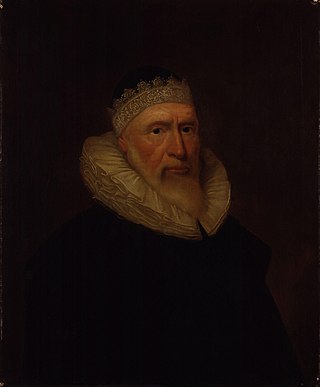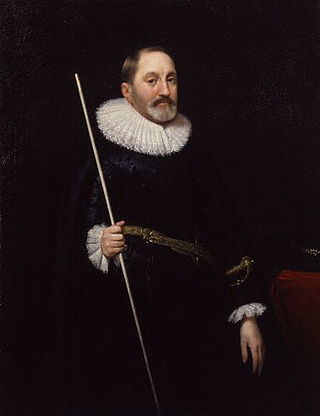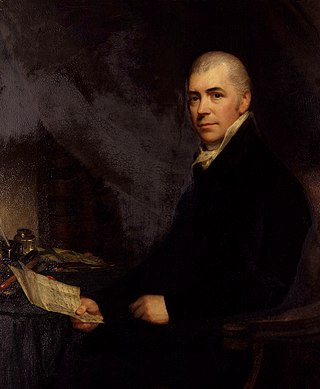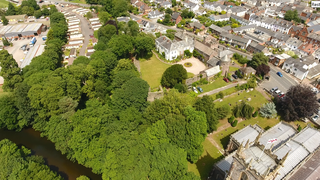Related Research Articles

Sir Julius Caesar was an English lawyer, judge and politician who sat in the House of Commons at various times between 1589 and 1622. He was also known as Julius Adelmare.

Sir William Brooke, 10th Baron Cobham, KG, lord of the Manor of Cobham, Kent, was Lord Warden of the Cinque Ports, and a member of parliament for Hythe. Although he was viewed by some as a religious radical during the Somerset Protectorate, he entertained Queen Elizabeth I of England at Cobham Hall in 1559, signalling his acceptance of the moderate regime.
Sir Henry Marten, also recorded as Sir Henry Martin, was an English judge and politician who sat in the House of Commons at various times between 1625 and 1640. He served as Judge of the High Court of Admiralty from 1617 to 1641.

Sir Nicholas Hyde was Lord Chief Justice of England.
Lord William Howard was an English nobleman and antiquary, sometimes known as "Belted Will" or "Bauld (bold) Will".
Sir Robert Bell SL of Beaupré Hall, Norfolk, was a Speaker of the House of Commons (1572–1576), who served during the reign of Queen Elizabeth I.

Henry Norris, 1st Baron Norreys of Rycote in Oxfordshire, was an English politician and diplomat, who belonged to an old Berkshire family, many members of which had held positions at the English court.

Sir Francis Gawdy was an English judge. He was a Justice of the King's Bench, and Chief Justice of the Common Pleas. His country seat and estates were in Norfolk.
Sir John Townshend MP, of Raynham Hall in Norfolk, was an English nobleman, politician, and knight. He was the son of Sir Roger Townshend and Jane Stanhope. He was also a soldier and Member of Parliament. He was killed in a duel with Sir Matthew Browne in August 1603.

Sir Thomas Edmonds was an English diplomat and politician who served under three successive monarchs, Queen Elizabeth I, Kings James I and Charles I, and occupied the office of Treasurer of the Royal Household from 1618 to 1639.

Sir Henry Halford, 1st Baronet, GCH, born Henry Vaughan, was president of the Royal College of Physicians for 24 years. As the royal and society physician, he was physician extraordinary to King George III from 1793 to 1820, then as physician in ordinary to his three successors – George IV, William IV and the young Victoria. He also served other members of the royal family until his death.
Henry Wilkinson (1610–1675) was an English clergyman, in the Commonwealth period a canon of Christ Church, Oxford, Lady Margaret Professor of Divinity, and member of the Westminster Assembly. Later he was a nonconformist preacher.

Tiverton Castle is the remains of a medieval castle dismantled after the Civil War and thereafter converted in the 17th century into a country house. It occupies a defensive position above the banks of the River Exe at Tiverton in Devon.

Weare Giffard is a small village, civil parish and former manor in the Torridge district, in north Devon, England. The church and manor house are situated 2 1/2 miles NW of Great Torrington in Devon. Most of the houses within the parish are situated some 1/2-mile east of the church. The church is situated on a hillside to the north and slightly above the wide and flat valley floor of the River Torridge. The Church of the Holy Trinity and the adjacent Weare Giffard Hall are designated members of the Grade I listed buildings in Devon. In 2011 the parish had a population of 345.
Thomas Browne, of Betchworth Castle, Surrey, was an English politician.
Sir John Wolley was Queen Elizabeth I's Latin Secretary, a member of her Privy Council, and a member of Parliament from 1571 until his death in 1596.
Sir Matthew Browne of Betchworth Castle, Surrey, MP, was the only son of Sir Thomas Browne and Mabel Fitzwilliam. He was involved in legal and financial transactions concerning the Globe Theatre in 1601. He was killed in a duel with his kinsman, Sir John Townshend, on 1 August 1603.
George Turner was an English physician in London. He is known for his interest in alchemy and friendship with Simon Forman. His wife was the convicted murderer Anne Turner.
Robert Huick, Huicke, or Hewicke, of London, Enfield and St. Martin-in-the-Fields, Middlesex, was an English physician. He was also briefly a member of parliament for a few weeks in the years 1547 and 1553. He was educated at Merton College, University of Oxford. By 1546, he was married to Elizabeth Slighfield, a sister of Henry and Walter Slighfield of Peckham, Kent; they had one or two daughters. He later married Mary Woodcock, and they had one daughter. One of his daughters was Anna Huick, wife of Sir Mark Steward (1524-1604), MP, of Stuntney in Cambridgeshire. Huick was an academic of the University of Oxford and served as Principal of St Alban Hall from 1535 to 1536. He was also a physician and was briefly a Member of the Parliament of England for Wootton Bassett in 1547 and for Camelford in March 1553.
Thomas D'Oylie or D'Oyly (c.1548-1603) was a leading English physician and Spanish scholar of the Elizabethan era.
References
![]() This article incorporates text from a publication now in the public domain : Goodwin, Gordon (1890). "Giffard, Roger". In Stephen, Leslie (ed.). Dictionary of National Biography . Vol. 21. London: Smith, Elder & Co.
This article incorporates text from a publication now in the public domain : Goodwin, Gordon (1890). "Giffard, Roger". In Stephen, Leslie (ed.). Dictionary of National Biography . Vol. 21. London: Smith, Elder & Co.